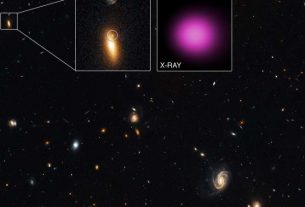A team of astronomers based on 10 years of observation of the Hubble telescope has discovered that the Milky Way seems to absorb more gas than it rejects.The source of this surplus material remains for the moment debated.
Our galaxy could be considered a gigantic living organism. Inside, stars are born, evolve and die, expelling their gases near the Milky Way. Then this gas is reabsorbed to form new stars. This recycling normally helps maintain a roughly balanced amount of gas, but new observations made with Hubble suggest that our galaxy seems to be taking more than it gives.
To arrive at these conclusions, researchers relied on the Cosmic Origins Spectrograph (COS), installed on the Hubble telescope. This instrument normally makes it possible to study the large-scale structures of galaxies, and to probe their evolution. It has been used here to audit incoming and outgoing gases in the Milky Way.
The researchers focused on about 270 shots taken by the instrument over the last 10 years. To put it simply – thanks to the Doppler effect – the further away the gas is, the more it turns red. Conversely, the more it falls back into the Galaxy, the more it becomes blue. After analysis of 187 clouds, it was then revealed that our dear Milky Way had a surplus of gas.
A still mysterious origin
Our galaxy recycles its own material, and so seems to be buying it elsewhere as well. But where does this gas come from? Andrew Fox, of the Space Telescope Science Institute and lead author of this study published in The Astrophysical Journal, suggests two hypotheses.
The first is that our galaxy absorbs gas evolving normally in the intergalactic medium (mainly hydrogen). It is also possible that the Milky Way can use its great power of attraction to steal gas reserves in smaller neighboring galaxies.
However, further studies will be necessary to try to solve this cosmic mystery. The researchers insist that their calculations are based only on a snapshot of the Milky Way (10 years is short). In these conditions, it is difficult to extrapolate these circulation rates of mass over time.

Email: mary@satprwire.com Phone: +44 20 4732 1986
Marry is a fitness freak in every manner and gives proper care about her health and of others. She is probably the best person we have at Daily Research News for covering articles from the Health sector. If not at work, she can be seen drinking a cup of coffee.



